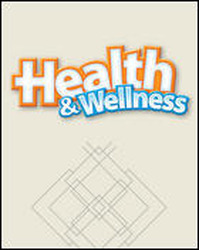1.
A) This is only true for identitcal twins. B) Because the mother has probably not experience labor before. C) They are not riskier than single births. D) Since there is more than one baby being born, there is more risk of complications. 2.
A) average birth weight B) low birth weight C) miscarriage D) a high birth weight 3.
A) by the third month B) at least by the sixth month C) only if she feels sick D) as soon as possible 4.
A) will not be attached to the placenta. B) will not have access to the mother's blood and oxygen C) will not be premature D) cannot develop into twins 5.
A) carefully laying the foundation for a very important building B) putting the finishing touches on a room you have decorated C) building a brick wall D) testing new recipes 6.
A) Apgar score B) ultrasound score C) test score D) delivery score 7.
<a onClick="window.open('/olcweb/cgi/pluginpop.cgi?it=jpg::::/sites/dl/free/0078760267/172861/250_lesson21_birth.jpg','popWin', 'width=NaN,height=NaN,resizable,scrollbars');" href="#"><img valign="absmiddle" height="16" width="16" border="0" src="/olcweb/styles/shared/linkicons/image.gif"> (61.0K)</a> A) No, the childbirth class is part of childbirth. B) No, delivery is stage one. C) Yes D) No, the last stage is the delivery of the placenta. 8.
A) no harm to the baby B) high birth weight C) fetal alcohol syndrome (FAS) D) depression in the baby 9.
A) Surgery is very serious and is not the natural way to have a baby. B) It is only done in the case of toxemia. C) It is only performed when there is an ectopic pregnancy. D) It is only done in the case of a stillbirth. 10.
A) grapefruit, spinach, beans, and milk B) ice cream, soft drinks, cookies, and chicken C) fast food, bagels, pickles, and meat D) coffee, vegetables, wine, and beef





